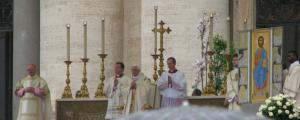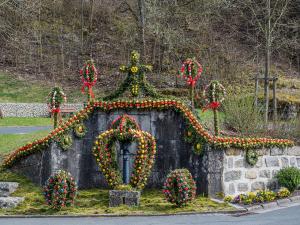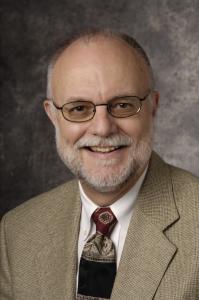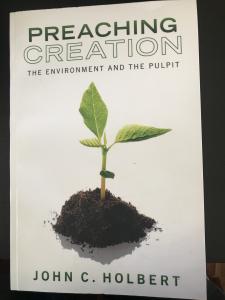 It is nearly certain now that we in Los Angeles will not be wending our way to any Easter services with our fellow parishioners. The governor of California yesterday asked, with considerable force, that all Californians, all 40 million of us, stay in our homes, venturing out only for absolutely vital reasons—grocery store runs, gas station fill ups, the occasional walk. There is no stated timeline concerning how long these restrictions may last, but since Easter is now only slightly more than four weeks away, there is little likelihood that churches will be full this Easter, barring an Easter miracle, I suppose! I imagine that many of you in other states are facing similar scenarios. You preachers will be filming your services, and your sermons, either from empty sanctuaries or your quiet living rooms. It will be an Easter to remember, but probably not in a good way.
It is nearly certain now that we in Los Angeles will not be wending our way to any Easter services with our fellow parishioners. The governor of California yesterday asked, with considerable force, that all Californians, all 40 million of us, stay in our homes, venturing out only for absolutely vital reasons—grocery store runs, gas station fill ups, the occasional walk. There is no stated timeline concerning how long these restrictions may last, but since Easter is now only slightly more than four weeks away, there is little likelihood that churches will be full this Easter, barring an Easter miracle, I suppose! I imagine that many of you in other states are facing similar scenarios. You preachers will be filming your services, and your sermons, either from empty sanctuaries or your quiet living rooms. It will be an Easter to remember, but probably not in a good way.
Still, we need Easter this year more than ever; we cannot miss that wild claim that life is stronger than death, that God will have the last word, and that word will encompass joy and hope and loud laughter. And there can be no better story of Easter than the one that Mark serves up. It is itself wild and strange, so unlike the other three gospels’ accounts, nearly exactly matching the context it will face this year of 2020.
There is little wonder that centuries of commentary on Mark’s ending has argued long and loud that it just cannot conclude at 16:8. Why, the Greek ends the supposed final line with a hanging preposition, a tiny word that usually has something following it, some concluding noun or verb or climaxing phrase. Not here! The last clause is something like “talk about terrified…” (this is how Daryl D. Schmidt translates the final two Greek words in his terrific commentary, The Gospel of Mark in The Scholars Bible series from 1990). If I may disagree with the estimable Schmidt, I would not have added those three dots to the reading. I am fully convinced that Mark exactly intended to end his story just like this, with “suddenness, rather than resolution,” as Schmidt himself concludes (Schmidt, 151). Why that is so is for me the greatness of this gospel, its fabulous ability to draw its readers into the tale, and then to demand that they become far more than readers; all who witnessed the story from beginning to amazing end are now asked, really commanded, to become followers of the one they have merely observed up to now. The time for reading is over; now only doing, only loving, only helping to bring in the rule of God, will do!
Marks’ resurrection story begins rather like one would expect. Three women, who have watched at a distance as Jesus was murdered on the cross, while all of his male disciples have fled in horror and terror, now resolve to go to the tomb, once the Sabbath has ended, and anoint the body of the man they have learned to love and cherish. His death was a mighty blow to their hopes and dreams, though we are not told precisely what those hopes and dreams were. Jesus’s death has ended them, whatever they were, and all they imagine they can do now is treat the dead Jesus with honor and care. So, they, Mary of Magdala, Mary, mother of James, and Salome, take spices in order to embalm the corpse. They are of course unaware of that earlier anointing by another woman that Jesus understood as a preparation for his burial (Mark 14:8).
Mary of Magdala is always mentioned first among Jesus’s women disciples (so Matt.27:55; Luke 8:2), and is later depicted in Christian art and commentary as the so- called “sinner” at Jesus’s feet in Luke 7:37. There is no textual evidence at all that this Mary was some sort of prostitute, as too many readers have assumed. She is here in Mark merely a witness to his death. The next woman, another Mary, is mother of James, traditionally thought to be son of Alphaeus (Mark 3:18). The third woman is Salome, not mentioned outside Mark’s gospel, though it has been tempting over the years to connect her with the daughter of Herodias, as did Oscar Wilde and Richard Strauss in play and opera, who danced for the head of John the Baptizer (Mark 6:22). Apparently, Josephus was the first author to connect the stories of the dancer with Salome as daughter of Herodias. It would be wonderful for the reader if that same Salome, implicated in the death of John, would now at gospel’s end be a faithful witness to Jesus’s death and resurrection, but there is surely no textual proof of any such connection.
On the way to the tomb, the three women realized they had a problem, “Who will help us roll the stone away from the opening of the tomb” (Mark 16:3)? But upon arrival they discovered that the stone was already rolled back, though, as Mark tells us in a footnote, “it was very large” (Mark 16:4). “And when they went into the tomb, they saw a youth sitting on the right, wearing a white robe, and they were alarmed” (Mark 16:5). The only other use of the word “youth” is that one who fled naked, dropping a “shroud,” just before Jesus’s capture and trial (Mark 14:51). Tradition has often assumed that this youth was Mark himself, a witness to the events of Jesus’s life, which he later writes down as his gospel. Now here, another youth, sits in the tomb, at the right hand, dressed in white, the color of purity and victory. The immediate reaction of the women is “alarm.” One might also translate the word “astounded” or “amazed.” It is the word used to describe the disciples’ response to Jesus’s earlier claim that no rich person will ever be able to enter the realm of God (Mark 10: 24). Others read “apprehensive,” a reading that strikes me as a bit weak. The sight of a white-robed youth engenders in the women, who had come to anoint a corpse, something rather more than “apprehension!”
The youth speaks to them: “Do not be alarmed,” using the same verb. “You are looking for Jesus, the Nazarene who was crucified. He was raised; he is not here! Look at the spot where they put him” (Mark 16:6). The first time Jesus is addressed in Mark 1:24 he is called the Nazarene, and his final mention is the same. “He was raised” does not employ the same verb used in the various resurrection predictions earlier in the gospel (Mark 8:31; 9:31; 10:34). The latter verb is often used to refer to a final resurrection, rather than this unique one for Jesus. The verb is clearly passive; Jesus has not risen; he has been raised, certainly by the power of God.
The youth continues his speech to the alarmed women by saying, “But go, and tell his disciples, and (especially) Peter, that he is going before you to Galilee! You will see him there, just as he told you” (Mark 16:7). Here is one of Mark’s master strokes. The youth commands the women to go and tell the wonderful news that Jesus has been raised and can be found in Galilee; they are to tell his disciples, “and Peter,” as the text literally says. Of course, Peter, “the rock,” is the chief disciple, but he has hardly proved to be worthy of his name. Though he put his life on the line, he claims (Mark 14:31), in the face of the trial of Jesus, he had denied everything (Mark 14:71), acting ironically like the “rocky soil” that cannot sustain the seed of the gospel (Mark 4:17). Peter has not proven to be any sort of rock, save hard-headed and ignorant of what Jesus is calling him to do and be. Thus, it is this Peter especially who needs the good news of Jesus’s resurrection, and Mark singles him out for just that.
So now the women have received their marching orders. They are to go and tell the disciples what they have seen and they are to tell them where they may find the risen Jesus. There is here, unlike so many places in Mark’s gospel, a clear and direct command to act, but the women do none of those things. In a veritable thunderclap of an ending, Mark writes, “Once outside, they ran away from the tomb, because fear and terror seized them, and they said nothing to anyone (literal Greek is “no one, nothing), because they were horrified” (Mark 16:8)! The three words used to describe the emotions of the women are all different and offer a cascading portrait of absolute shock that shuts their mouths completely. Rather than run and tell, they run and escape that tomb in complete silence. In a final instance, Mark says that human beings simply cannot do what they are asked to do, because the call of Jesus is plainly too costly, too difficult to apprehend, too demanding to follow. The first witnesses to the wonder of the resurrection do not tell anyone about what they have seen! This is why many early readers of Mark were convinced that something was missing from his gospel, some part of the scroll torn off perhaps. But they are wrong. Mark knew exactly what he was about. If the women did not tell in their terror, and if the men ran away from Jesus’ final hours in horror, it is more than obvious that someone must tell, lest the world remain in the dark about the greatest story ever told. And, of course, that someone is you, and that someone is I. Mark has delightfully and resolutely sucked us into his story, and made us no longer objective readers, but would-be disciples whose task it is to tell what we have seen and heard in his gospel. The genius of Mark is laid bare in his ending, but he will have failed in his attempt to include us if we do not respond by telling and by acting in ways that Jesus has commanded. A Happy Easter means an Easter filled with loud disciples, speaking and living and laughing in the love and power of God, as that love has been revealed in the life, death, and resurrection of Jesus.
A story like this can hardly be contained within any sanctuary. It does not need trumpets and thunderous organ and well-tuned choir to make its claim. An empty church or a quiet living room will do fine to reveal that astonishing claim that death did not defeat this Jesus, that his call to live in love and hope is real, and that he bids his followers to follow him to Galilee, to Paris, to Berlin, to London, to New York, to Los Angeles where we will see him. And in our actions for the rule of God, we will finally know fully who he is.
(Images from Wikimedia Commons)











